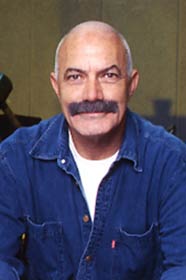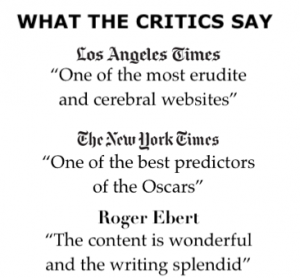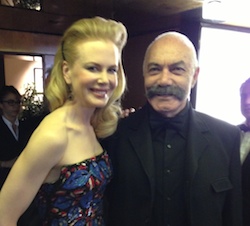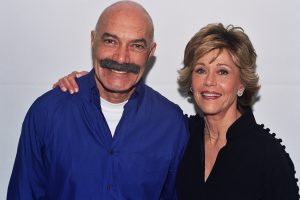Interview with a Vampire had been in development for almost 20 years, seemingly with an obstacle or controversy for almost every one of them. Aided by producer David Geffen, only director Neil Jordan – riding high after the critical and commercial success of “The Crying Game” – was able to overcome those hurdles in adapting of Anne Rice’s 1976 novel. Although Rice originally balked at Tom Cruise playing the vampire Lestat, it didn’t hurt that the film, and there was Brad Pitt, himself on the road to superstardom, alongside Kirsten Dunst as their pre-teen companion.
I was sent a script by David Geffen at Warner that Anne had written. I found it intriguing, [but] there were elements in the book that had been excised and slightly neutered. So I just said, “Look, why don’t I try my own draft of the script?” which I did, and they quite rapidly put it into production. Brad Pitt was attached at the time, and they were searching for Lestat. Because of the exigencies of the writer’s guild, I didn’t end up getting a credit, but I reintroduced elements of Anne’s book that had gotten waylaid a little bit.
Some of the eroticism had gone missing, I think. The wonderful issue of Claudia as a child. The attempt of these two men, who were in this eternal relationship, to construct a family for themselves. And I suppose the broader sense of making a vampire movie into a substantial epic, introducing elements that normally you don’t see in these kind of movies. And the time transition from New Orleans, right up to the present day. I just wanted to make it more faithful to Anne’s book.
What kind of juice did you have after “The Crying Game”?
I wasn’t aware of what kind of juice I had. I was just aware that I’d been sent a big Hollywood movie. I did say to the producer, David Geffen, “I function best in an independent context.” And David said, “I’ll keep the studio off your back.” Which he did. We ended up making a very personal movie with substantial budget with two major stars. There was an operatic element to the novel, and I remembered Francis Coppola’s “Bram Stoker’s Dracula,” which had expanded the palette of a vampire film.
Daniel was mentioned by the studio, but I never felt he would do it. I sent him the script, and unsurprisingly, he said he didn’t want to do a vampire film. Anne’s particular favorites were people like Rutger Hauer and Jeremy Irons, but we went through the normal casting process, and then Tom Cruise was suggested. I went and met Tom twice, and then thought I could get something really great going here. I’d always admired Tom as actor, and he was the biggest star around at the time.
I liked him as an actor, it’s as simple as that. Lestat is described as tall, rangy, and blonde haired and all that sort of stuff. Tom was none of those things. But he had conviction and a kind of chilling centrality to him, that I thought he’d be great in this role. It struck me that a huge Hollywood star was forced into a life not unlike the life that Lestat led. They have to avoid publicity, avoid crowds, keep their legend intact, keep certain unknowability about them. And I thought those things were part and parcel of Tom’s life, and maybe they would make him a great Lestat. And it turned out to be the case.
Anne Rice initially campaigned against Cruise
It was like the entire of the United States was out for me, really. It created a little paranoid world for us. We were shooting large scenes in San Francisco, New Orleans, London and Paris. And in each case, we had to shield ourselves off from paparazzi, from any glimpses. It was like we were making the movie like vampires, in a strange way. It helped me in the process, it concentrated the mind. I’m not sure how it helped the actors, but it made the production rather special.
River Phoenix’s death was horrible. It would’ve been wonderful if he played that part, but he just wasn’t there. So it was something we had to get over, really.
Brad Pitt has talked openly about his unhappiness
Brad was great in the role. The problem that he suffered from was the fact that the role suffers. It was the passive role, and it was the central role … often the narrative central character can be the most passive element in the whole equation. We were shooting at night constantly, we never saw the daylight for months, and I think it affected him, but it was part of the character as well. I mean, Louis is somebody who is punished through 300-year period by this creature. So the way the role affected Brad was not unlike the journey Louis himself had to go through.
Did you try to create atmosphere that would alleviate the heaviness
I don’t think I did. I just tried to work with him as an actor. Brad was there for far longer than Tom Cruise was, so he had to endure the entire production, so maybe that – and the passivity of the role, perhaps – took a toll on him. But I thought he was really good in the part. Any faults of what people perceive to be the performance are faults of the actual character itself, and of the novel itself. I mean, Louis suffers in the novel from the moment he’s turned into a vampire to the very end of the book. I’m sure it was a tough journey for Brad, but it was also a tough journey for the character, too.
I’ve done many movies where I’ve cast children. But the minute I saw Kirsten, it was amazingly apparent to me that her life would be acting, from start to finish. I’m normally terrified of casting kids because they’re so young, and it can affect their lives horribly in many ways. But this girl had a blazing talent, and an extraordinary beauty, and we were as protective as we should be in terms of a child being on the set. Her mother was there quite a bit. And I think in a strange way, the story comes alive when Claudia enters. However warped the family is, it becomes a story of a family. And she was extraordinary. I didn’t have to do that much to draw that performance out of her. It was all there.
Too intense and violent for a child?
Nothing like that. The interesting thing about it was, because with Claudia’s position in the drama, it’s not about sexuality. But kids love biting. They love blood. They’re not terrified of death and violence, they’re terrified of rather more unspoken things, in a way. And for me, it was just a lot of fun seeing a child feeding on adults. I don’t think there were any disturbing scenes that she had to witness.
Yeah, but that was fine. There was a huge prosthetic in Tom’s throat and the blood spilled out. But the shooting of it wasn’t disturbing, it was practical. And it was delightful to see her take that demonic energy and make it her own. But sometimes kids are like that, aren’t they?
Vampire movies and “teeth acting”
We didn’t want theatricality, to be doing Hammer horror movies. With Stan Winston, we did enormous amount of research, sketching with where the teeth should be. I didn’t want Tom to be using his teeth, so I invented “Tom’s thumb thing,” a little thumb prick elaborately designed in silver and etched with blade that he could use when he didn’t want to bite somebody. We tried to make it real and inventive. But if you look at F. W. Murnau’s [“Nosferatu”], they use the two front teeth. That’s what Klaus Kinski did in Werner Herzog remake of that, which is very demonic but also slightly comical.
There are some camp moments in it. Like when they eat the rats, that’s a thing I introduced to the script myself. There are enjoyable ironies through the whole thing, but camp, I didn’t want to go there.
Stuff that’s done digitally predates what we think of as invisible effects
I used Rob Legato who set up Digital Domain with James Cameron, and Rob was our digital effects supervisor and a second unit director. Claudia’s hair was a huge technical challenge at the time, when she cuts her hair off and it grows back. But when the teeth grow when she’s turned into a vampire, now, you could do those just by saying, “Siri, make their teeth grow.” But at the time, it was very complex. It was a combination of real physical prosthetics and really discrete digital enhancement of things. The trick was to blend them so you’re not sure what is digital, and what is not.
Your initial cut was 20 minutes longer
We had a version that was longer, where Brad actually goes to confession, and the priest is so horrified that he retreats towards the altar, and Brad drains his blood underneath this crucifix. I was sad not to see that there. There could be a director’s cut of the movie. I would happily do it. But the problem in turning the novel into a movie was that it was a picaresque narrative – “and then, and then.” It’s not like this set up tension between characters that’s resolved in the third act. When I had cut the movie, I was saying, “I really think it’s too long.” We showed it to a paid preview audience, and they said, “It’s too long.” I came back in a week, and now it’s shorter.
I wanted to be accurate to Anne’s book. Once Louis is turned into vampire, he’s stuck with a companion who is half a lover, half a manipulator. Any of the sexual undertones that are there are expressed through blood, and through desire for blood. There is exactly the amount of eroticism and homoeroticism that there was in Anne’s novel.
Sexuality is projected onto same-sex companions
The only thing they were fearful of was, is it scary enough? That was a problem for me because this is the first time you’ve made a movie from the actual vampire’s point of view. These characters cannot be harmed. You cannot put them in the kind of jeopardy that creates real terror, but you’re more in a world that is creating the terror yourself.
Film’s commercial success
If you make a film with Brad Pitt and Tom Cruise, it has to open big. It has to be some kind of success. And the fact I had been allowed to make it so particularly, and yet it became a commercial success, that was really gratifying.
A sequel?
I was asked to write a script of “The Vampire Lestat,” which I did. But Tom didn’t want to reprise the role. And it would’ve been quite a different animal. If Cruise had said yes, I’m sure they would’ve done it.
Film’s place in your body of work?
The second movie I made was “The Company of Wolves.” “Interview With the Vampire” was of a piece with that kind of fantasy. I made another vampire movie called “Byzantium.” There’s too many vampire movies going around. There’s great fun to be had with the genre, but they have become doubly ironic and meta.
“Interview With the Vampire” is available to own on Blu-ray & digital platforms now.










